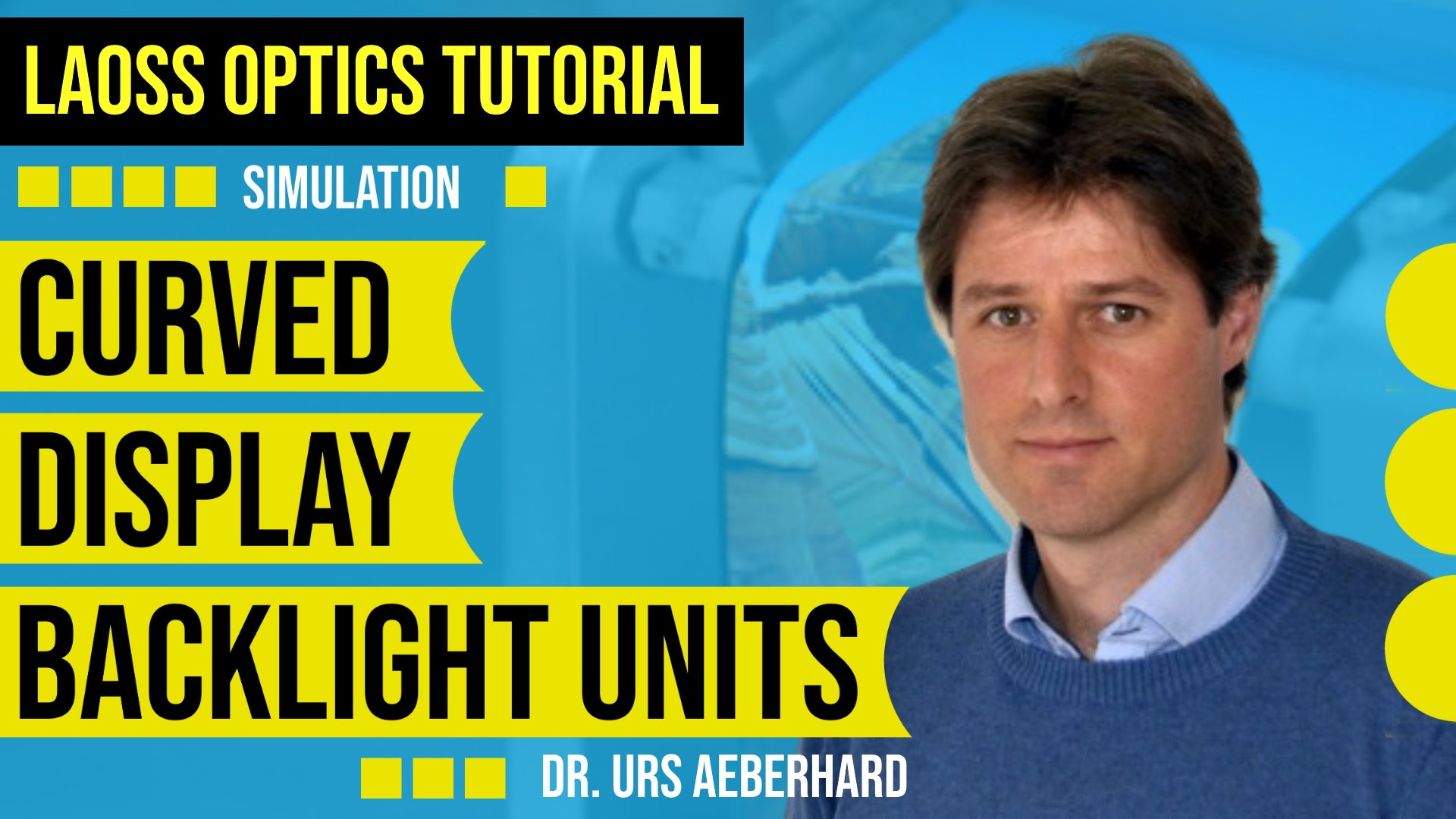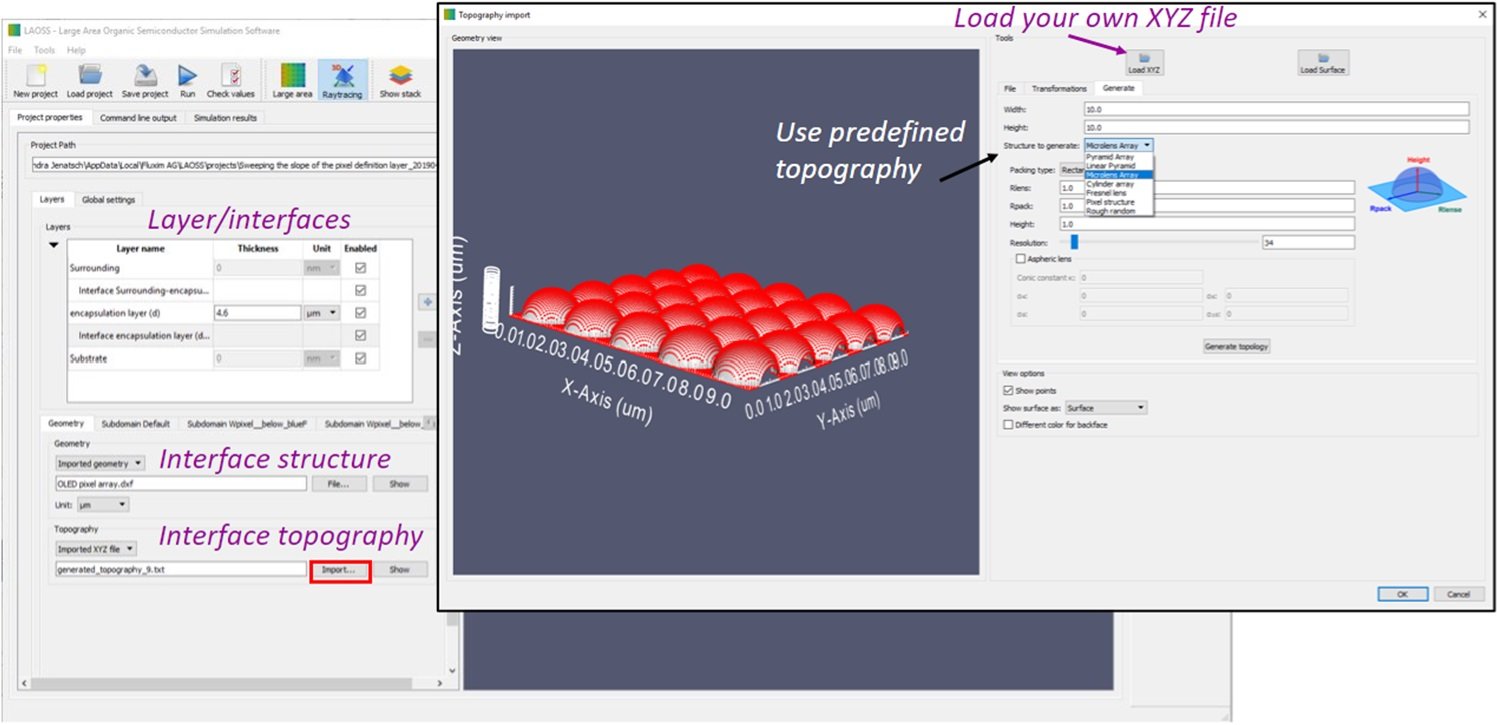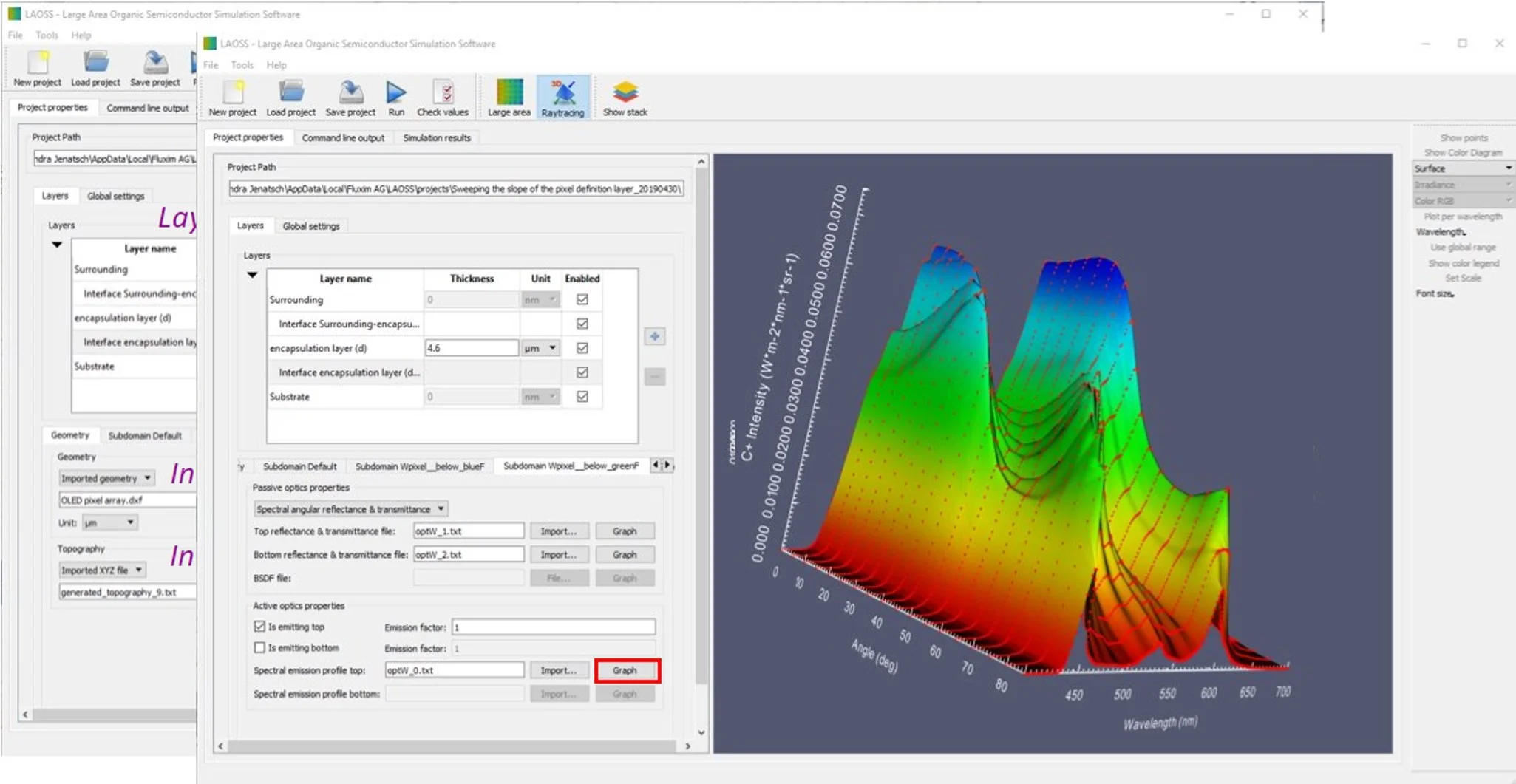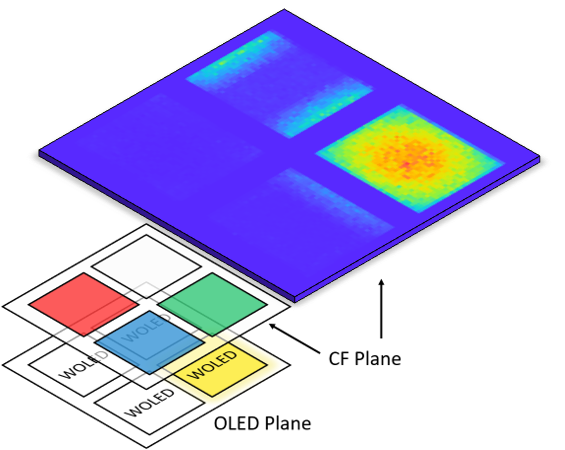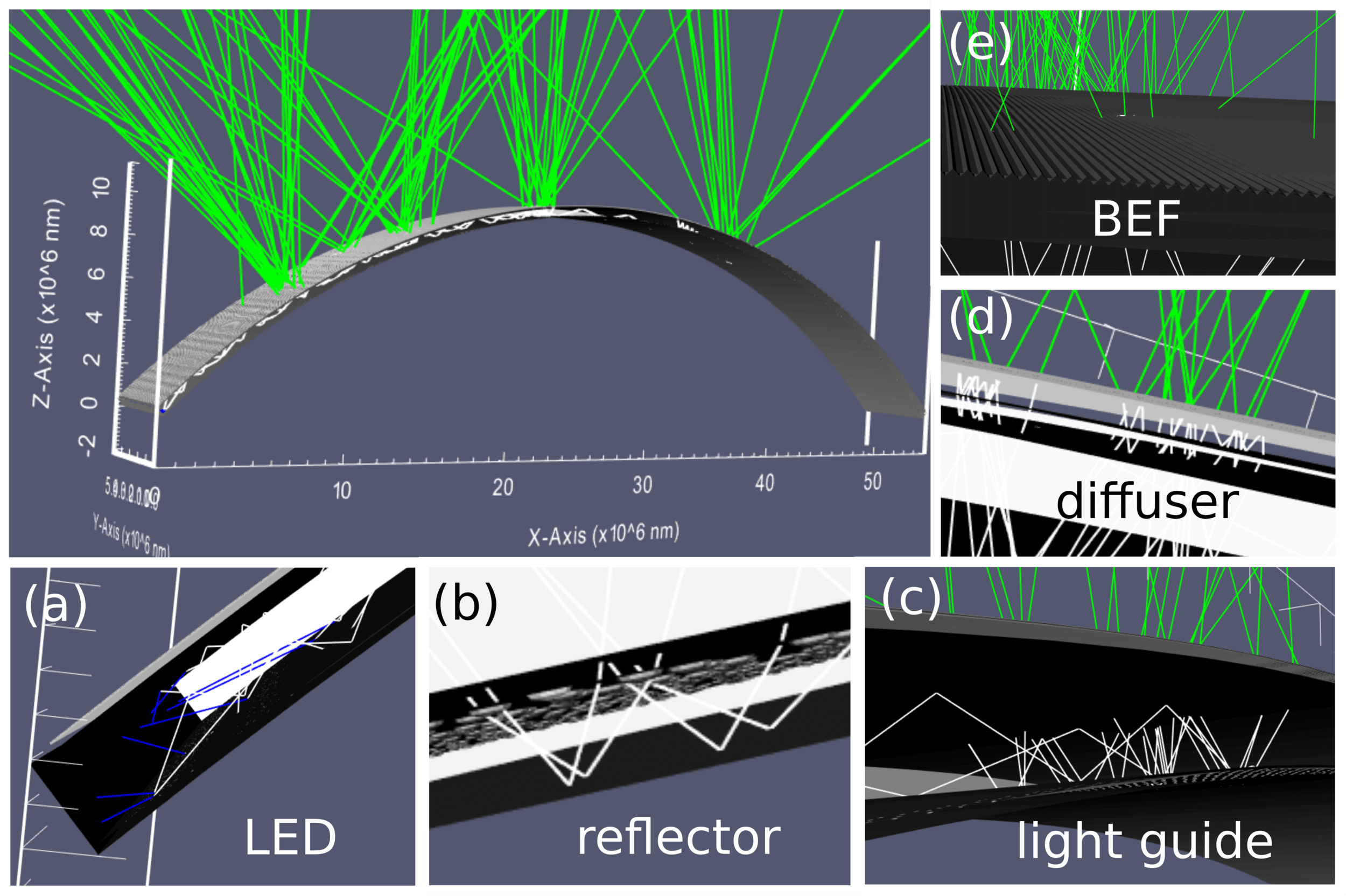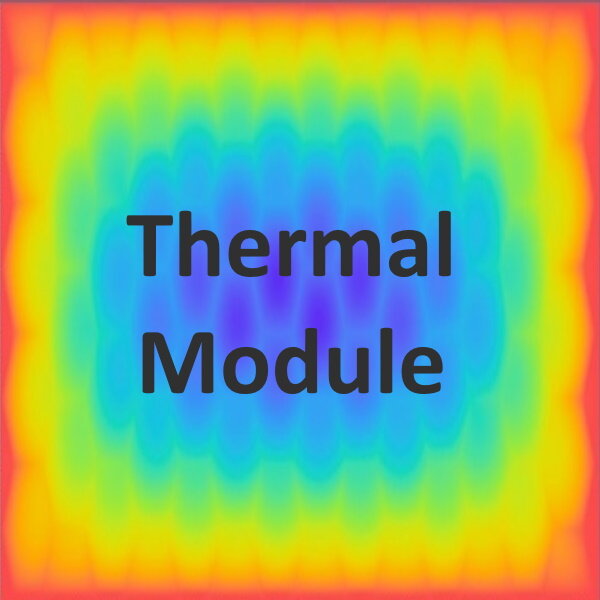optical module
An easy-to-use ray-tracing package to simulate 3D optical elements. It allows simulating in and out-coupling in OLEDs and solar cells functionalized by complex 3D optical elements or surface texturing.
Laoss Optics Tutorial
Tutorial on how to use the Optics module of Laoss to model a curved display backlight unit.
Graphical User Interface
Intuitive access to device structure, layers properties working files, and simulation output.
Geometry meshing on a large number of different 3D model files:
3DS: AutoDesk 3DS Max
Blend: Blender
DAE: Collada Digital Asset Exchange
DXF: AutoCAD DXF
OBJ: Wavefront OBJ
PLY: Polygon File Format/Stanford Triangle Format
STL: Stereolithography files (Standard Triangle/Tesselation Language)
The geometry can be imported using the geometry import tool or by drawing a Laoss-conformant geometry.
Easy integration with input files generated by a Setfos simulation
Easy access to a library of simulation examples and material property databases
Case Studies
Stand-alone 3D Optical Elements
Fresnel lenses or other optical elements can be coupled to OLEDs and solar cells to improve their efficiency. Also, structuring the device surface is an effective solution to increase the device light outcoupling. Laoss can model the optical output of a chosen optical element by using a powerful ray-tracing algorithm. The simulation results can be coupled to Setfos to study OLEDs and PVs with complex light-coupling geometries.
Simulating Optical Cross-talk in OLED Displays
In displays combining white OLEDs (WOLEDs) and color filters (CF), the color gamut can be hampered by the leakage of light through a filter, when the WOLED of an adjacent unit is addressed. This optical cross-talk is given by light that is scattered inside the optical structure and that leaks to near pixels before exiting the display. Mitigation of light cross-talk in WOLEDs/CF is a complex engineering problem that requires the combined optimization of several geometrical parameters. Laoss can capture the nature of pixel cross-talk. Such simulations are thus a suitable tool to optimize the characteristics of the pixel matrix without costly and time-consuming processes of device fabrication and testing.
Simulation of Beam Shaping by Micro-textures for Curved Displays
Curved Liquid Crystal Displays LCDs are becoming increasingly popular in the consumer electronics and automotive sectors. An essential component part of an LCD is the backlight unit (BLU), which provides uniform white illumination to the pixel array. To achieve the required level of spatial and angular uniformity as well as luminance, modeling of the BLU is an instrumental element in the BLU design process. In the case of flexible, thin, and lightweight applications, an edge-lit configuration (indirect illumination) is often favored, where the light needs to be scattered as a function of distance from the source, and light extraction is at an angle normal to injection. Ray-tracing simulations with Laoss Optics are shown to be useful for the design of various beam shaping features for optimized light-guide plate design.
DOME-SHAPED LIGHT-SCATTERING/OUT-COUPLING FEATURES AT THE BOTTOM SURFACE OF THE LIGHT GUIDE PLATE.
ANGULAR CHARACTERISTICS OF THE LUMINANCE FOR (A) FLAT AND (B) CURVED BLU, (LG, +DIFFUSER, +BEF).
